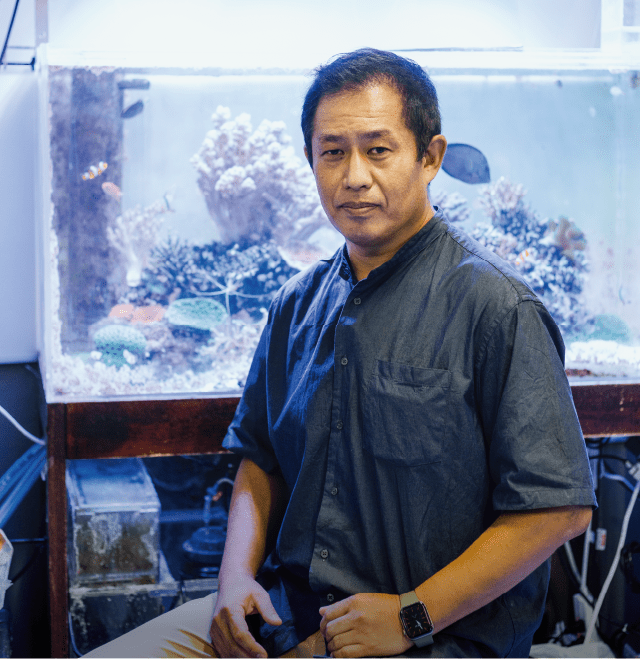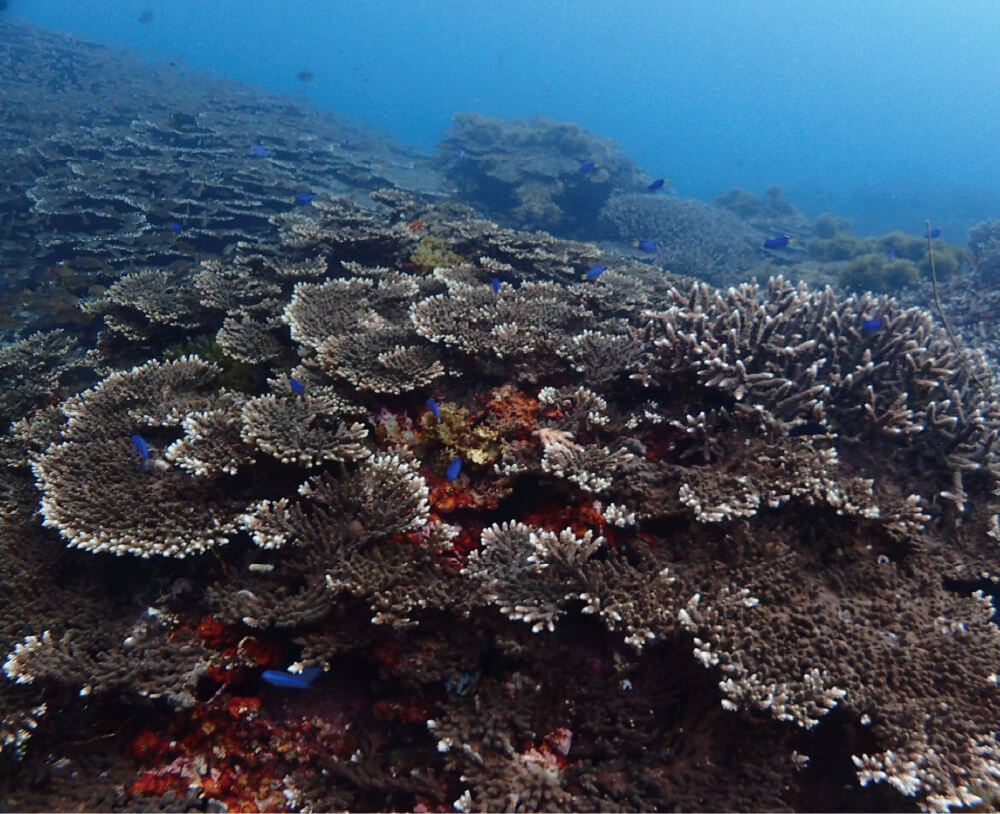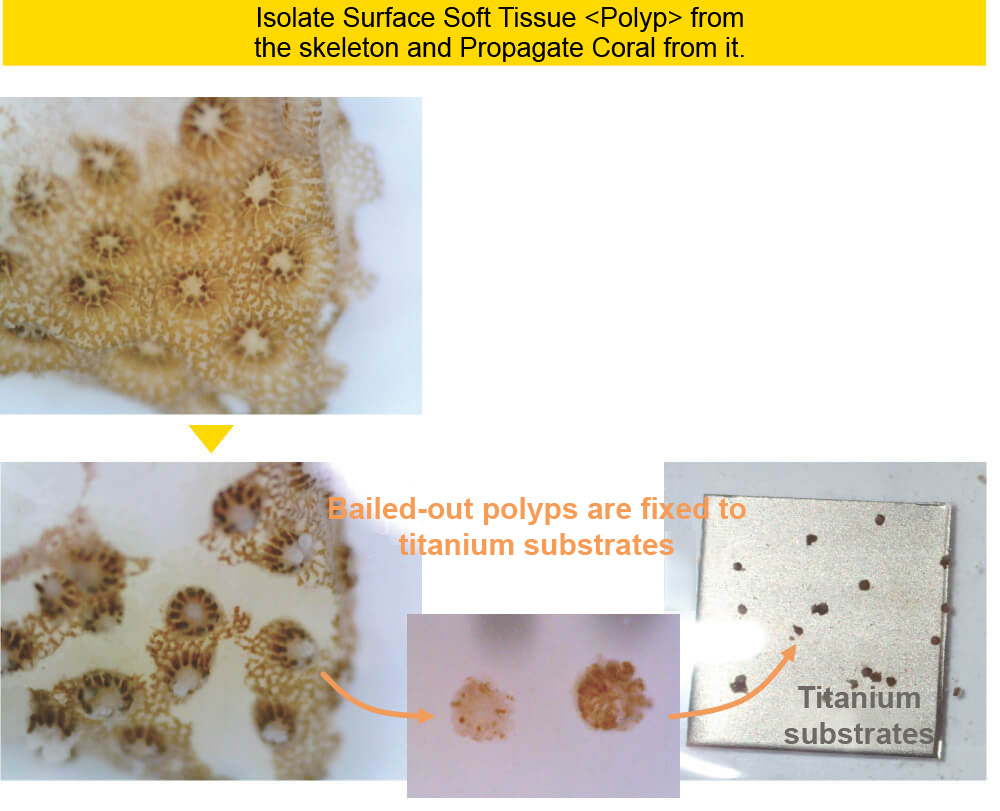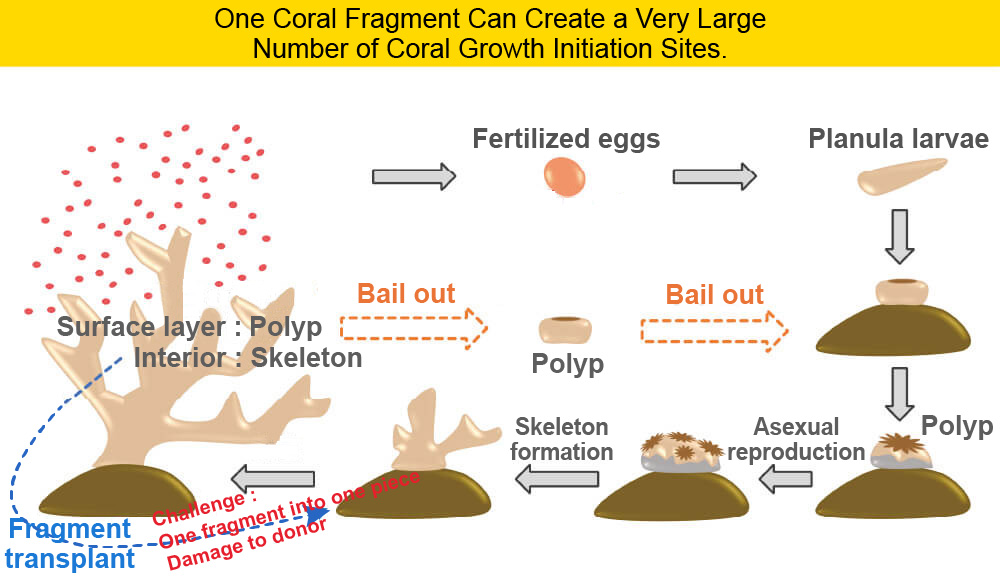Coral Growth Using Isolated Polyps as a Starting
Point for Carbon Dioxide Fixation
Coral Growth Using Isolated Polyps as a Starting
Point for Carbon Dioxide Fixation
We are developing a method to isolate polyps (soft tissue on the surface layer) from coral fragments and use them as a starting point for coral propagation,
The coral skeleton is made of calcium carbonate, so the more corals grow, the more carbon dioxide stays on the seafloor.
- Affiliation:
- Kansai University
Laboratory of Environmental Materials
- Representative:
- Masato Ueda

Professor,
Kansai University
Faculty of Chemistry,
Materials and Bioengineering
Masato Ueda PhD
He is currently working on discovering new possibilities in the area of coral reef restoration by utilizing the knowledge of titanium, a material related to biological hard tissues (bones and teeth) at the Laboratory of Environmental Material, which researches environmentally friendly materials.
SOLUTIONMethods for solving social issues
CO2 Fixation Through Coral Propagation
Coral reefs are home to more than 90,000 species of diverse organisms. Conservation of coral reefs broadly benefits the global environment. At the same time, greenhouse gas reduction targets being strictly set internationally, CO2 fixation is a vital necessity. Propagating corals will solve those issues simultaneously.
ORIGINALITYUniqueness, Passion for Development
VISIONDream, Outlook, Business Image
Business Model Involving the General Public
We aim to offer a solution to environmental issues where both companies and the general public can participate together by providing coral propagation opportunities to companies that are highly aware of environmental issues such as oil companies, airlines, shipping companies, and propagation infrastructure to general consumers.




